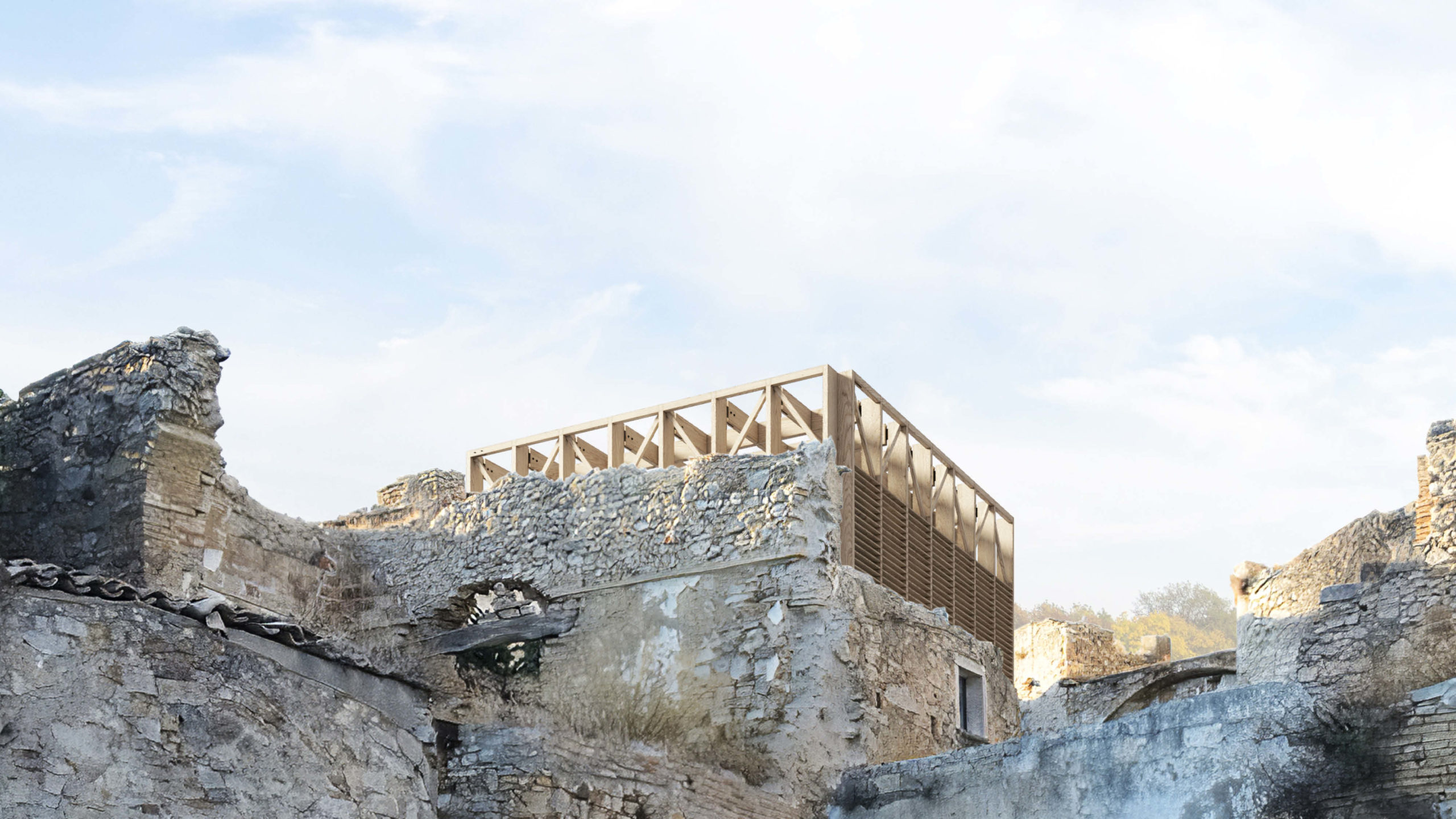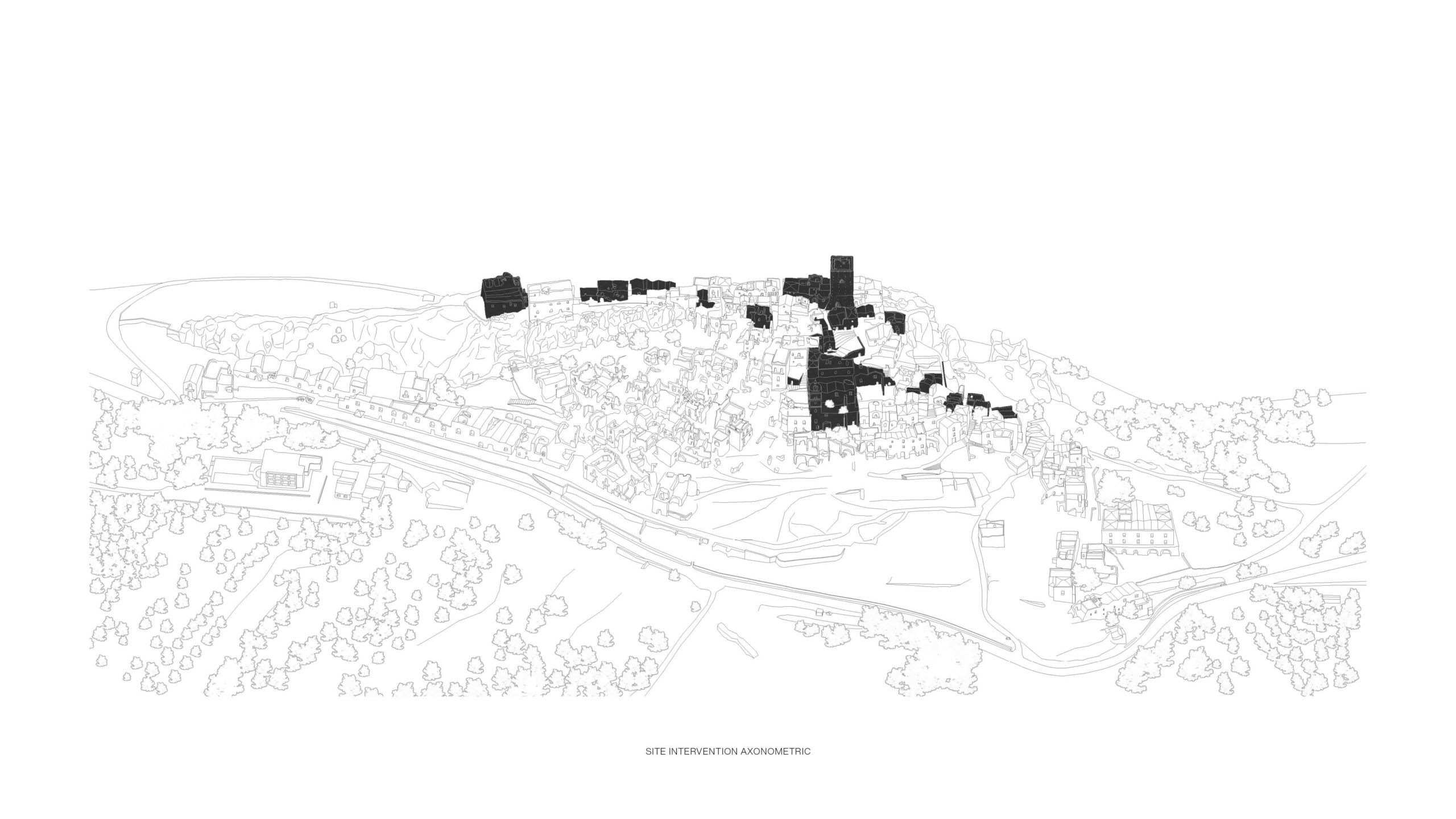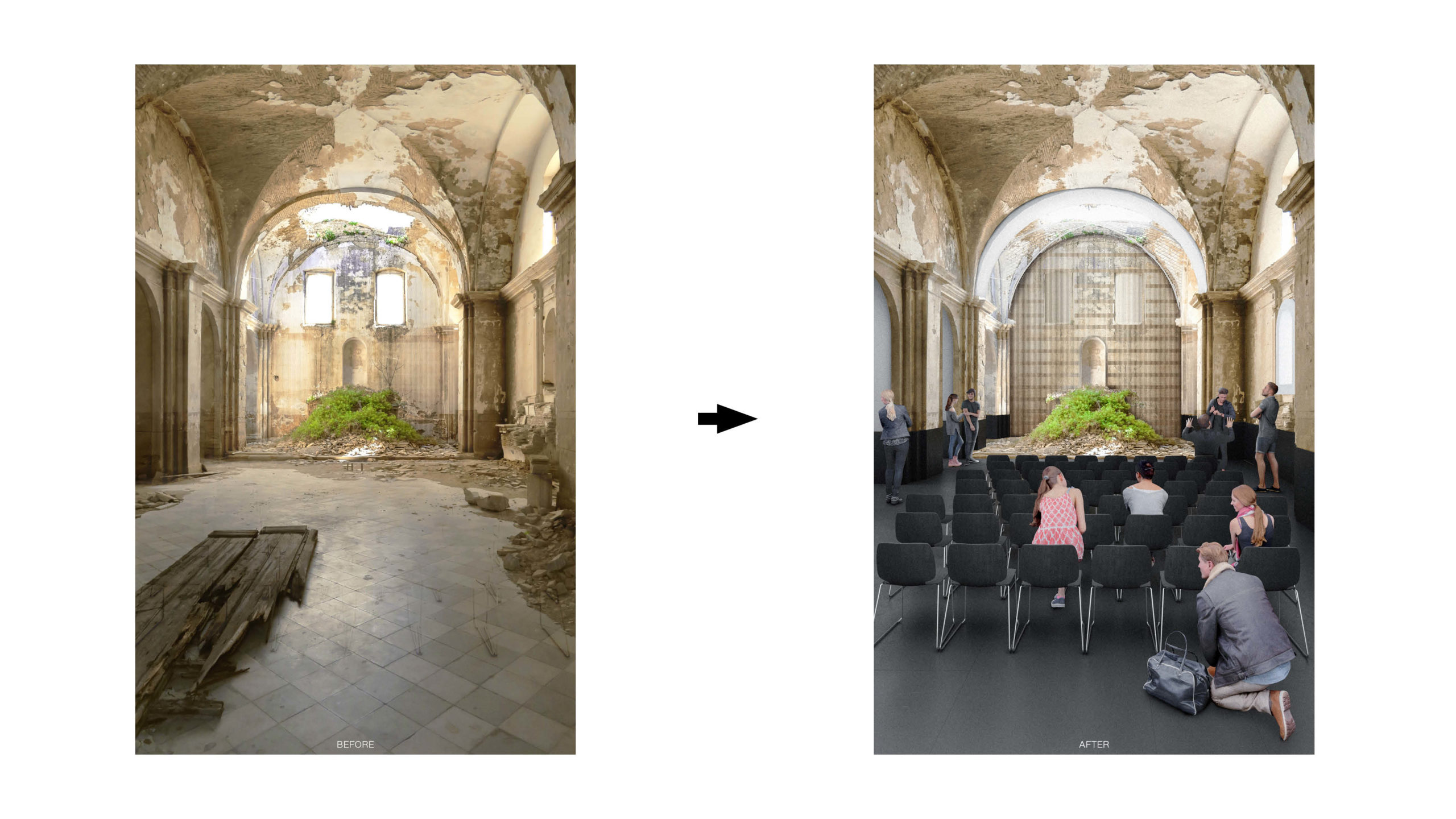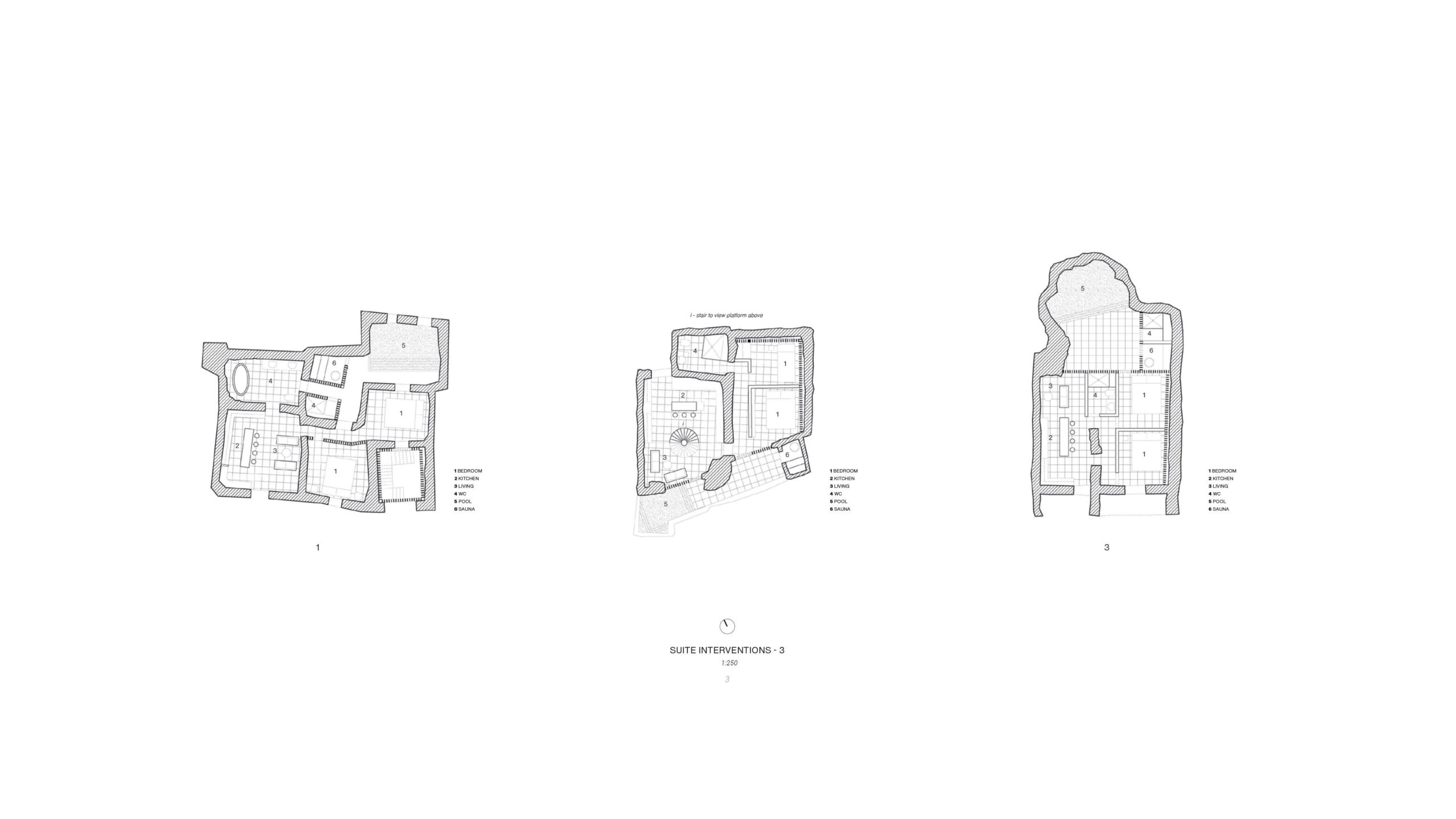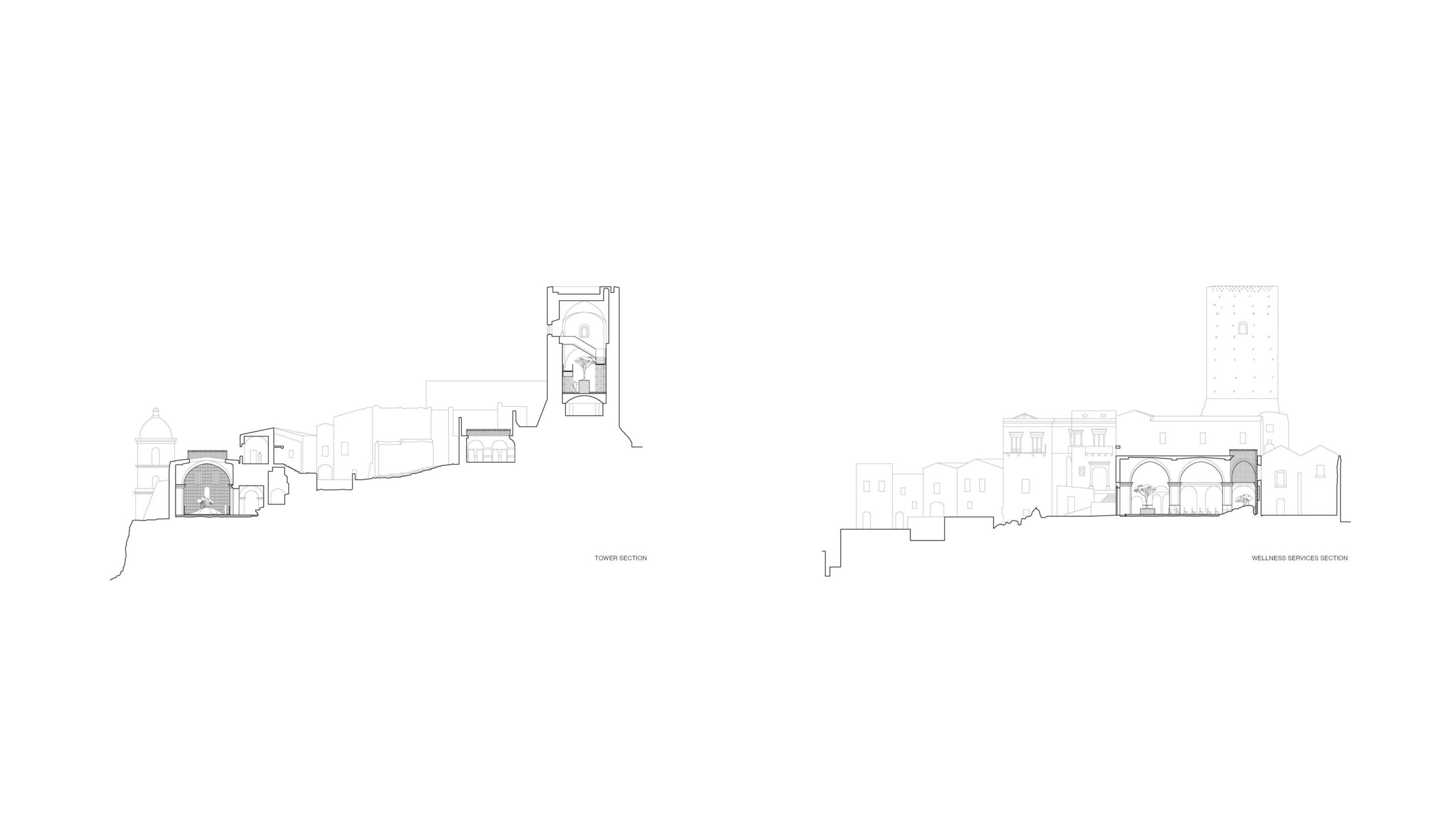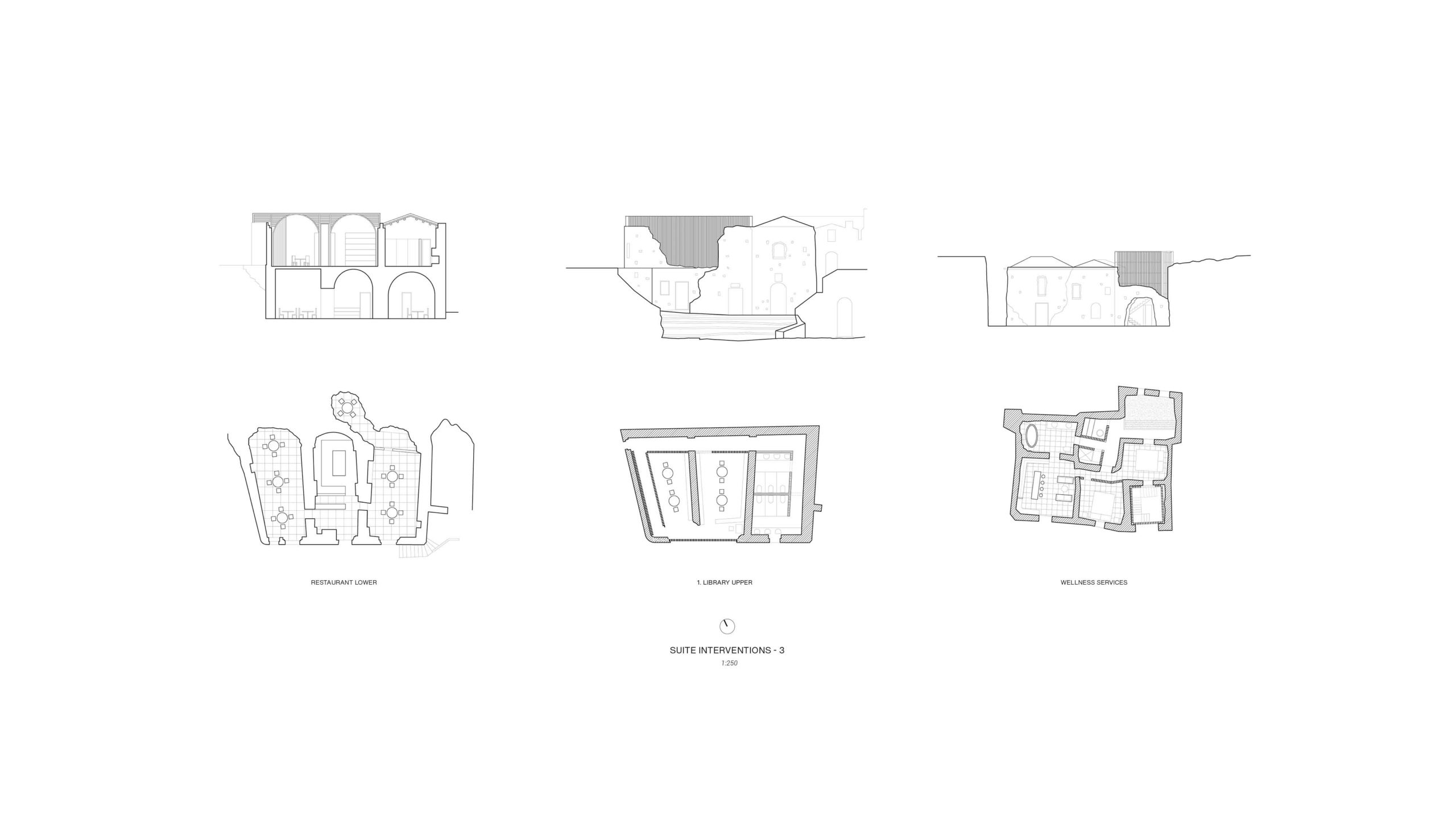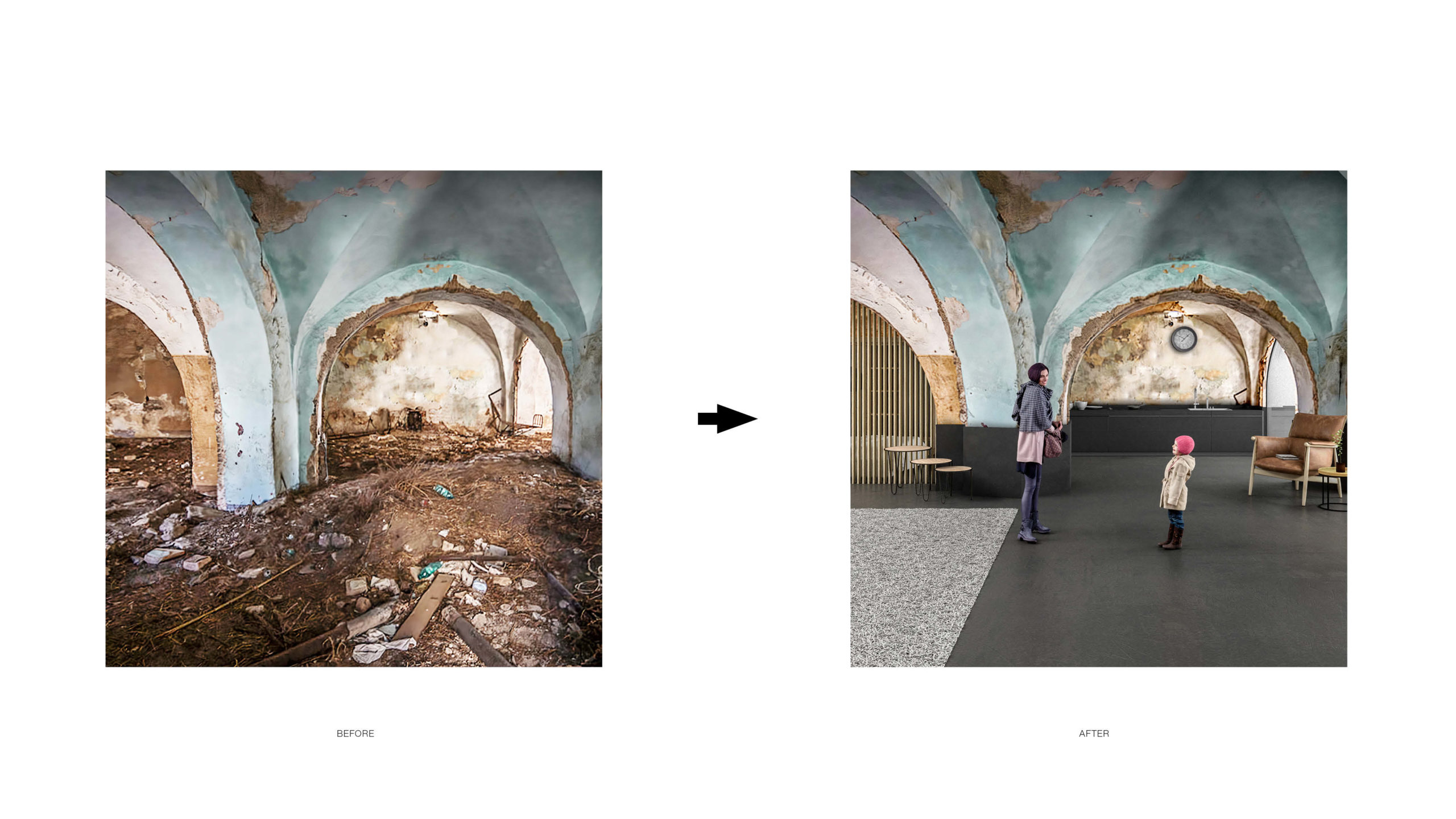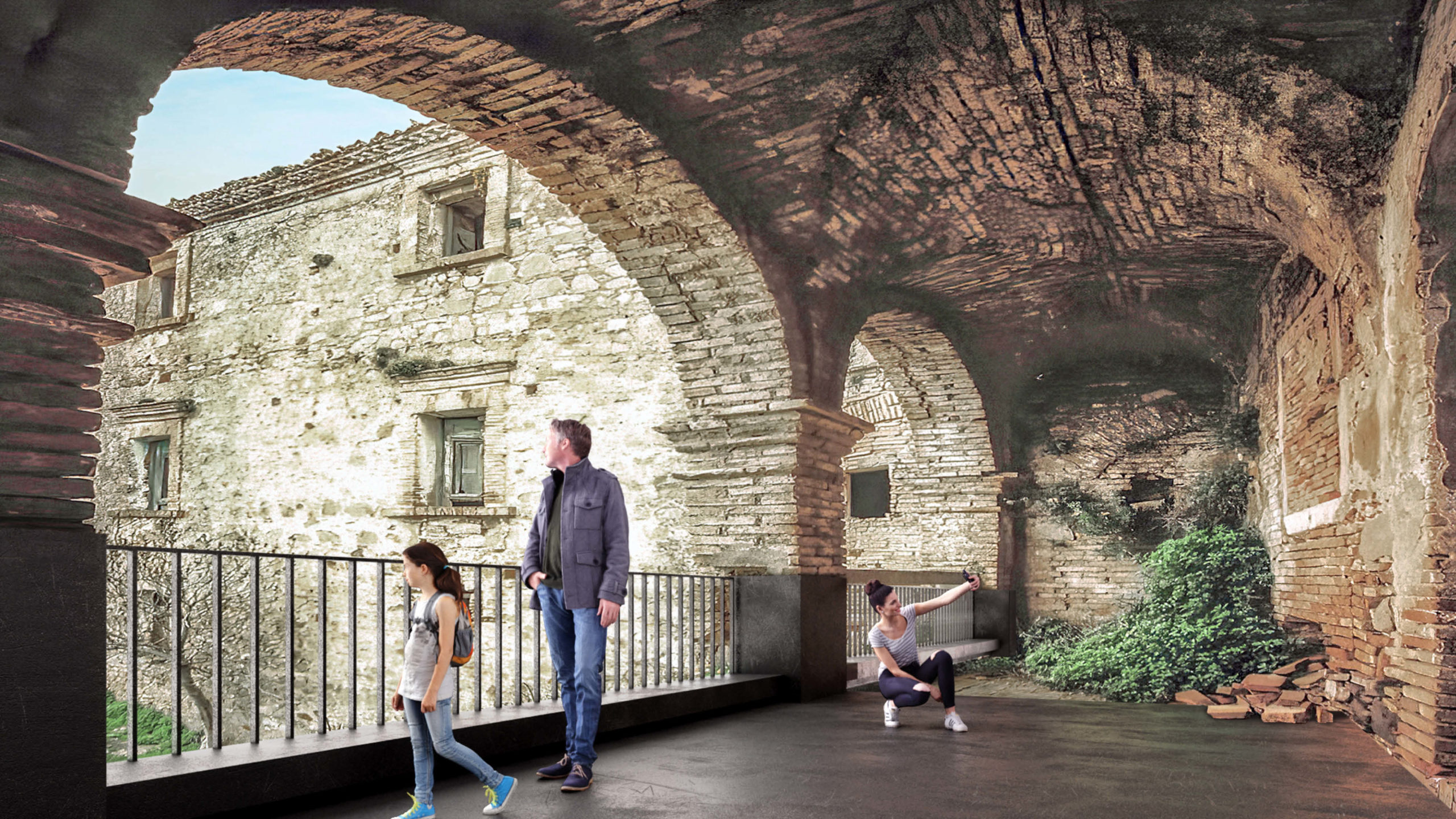How can a site carved from stone retrace the footsteps of the human fingerprint? An empty town with infinite stories, both of abandonment and fantastical romantics, must remain. Breathing a new life to forgotten history requires a careful surgical operation, like the recovery of a broken water vessel. The fragments speak stories of townspeople and the activity they have left behind, leaving only traces. A fossilized town can now be dis¬covered and restored as individual moments. Meshing the damaged ruins through an operation of nesting and stitching begins to relive the town through a dialogue with the contemporary. A new system of nesting within the old, maintains the relic of the previous age while the necessity of the new may come to life.
New volumes only find themselves embedded within ruined walls, allowing visitors to rediscover Craco through an archaeological type experience. The refuge shelters are embedded within a nest which act as a protective skin for the ruined walls. The notion of embedded boxes come to play, leaving visitors with legible layers of history. A gallery pathway is introduced within the central zone, linking
One must get lost in the forgotten, to truly discover its value. Every visitor’s journey is part of the restoration process. A site of the past is monumental to the person; the surgical stitching of a ruin becomes the mending of the soul. An operation of protecting the old, becomes a renewed spirit of the visitor. Craco is the embodiment of layered stone
Location: Craco, Italy
GPS Coordinates: 40.379916, 16.437084
Client: YAC, Craco ricerche
Authors: Claudio C. Araya, Yahya Abdullah
Design Year: 2020
Area: unknown
Status: 1st Prize Competition, Cultural, Touristic infrastructure

